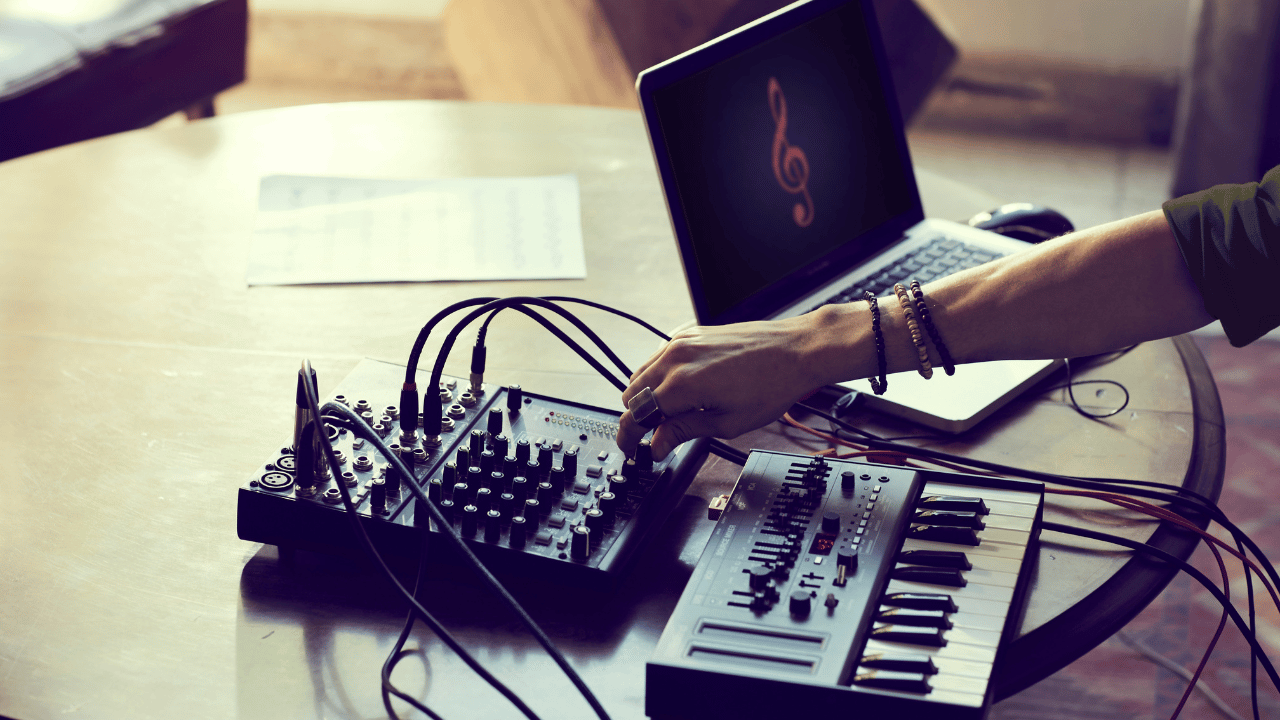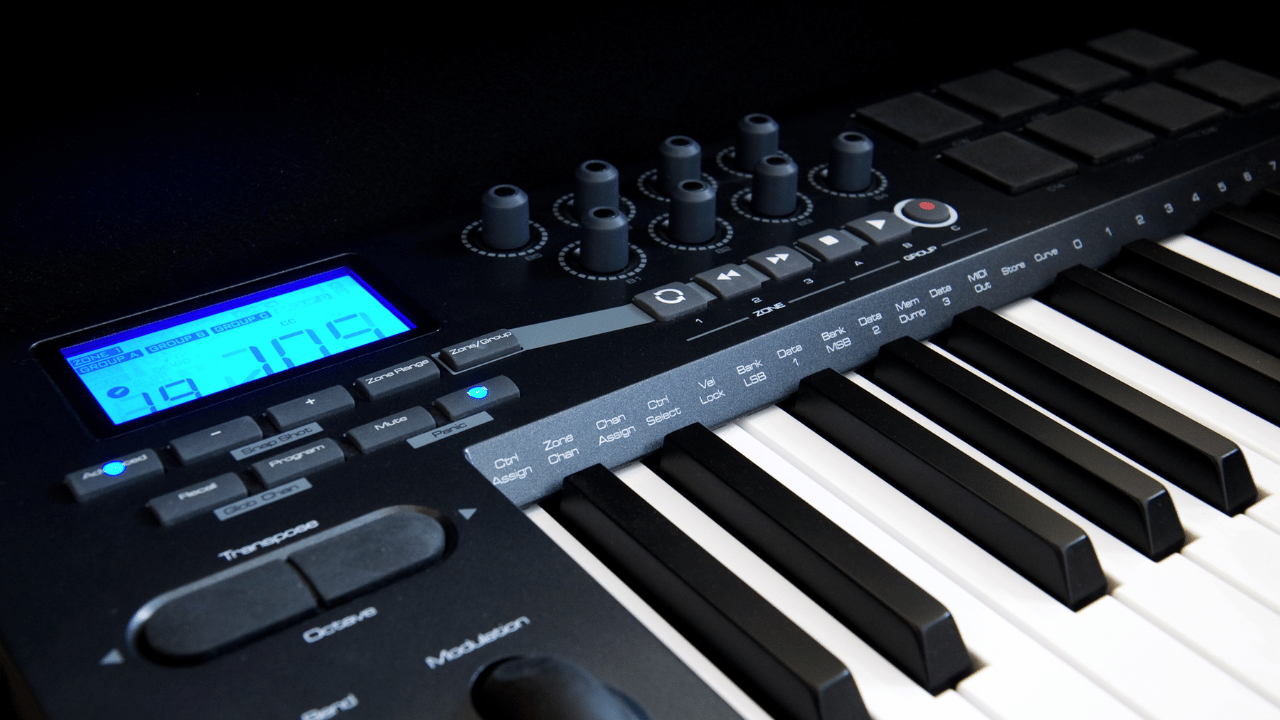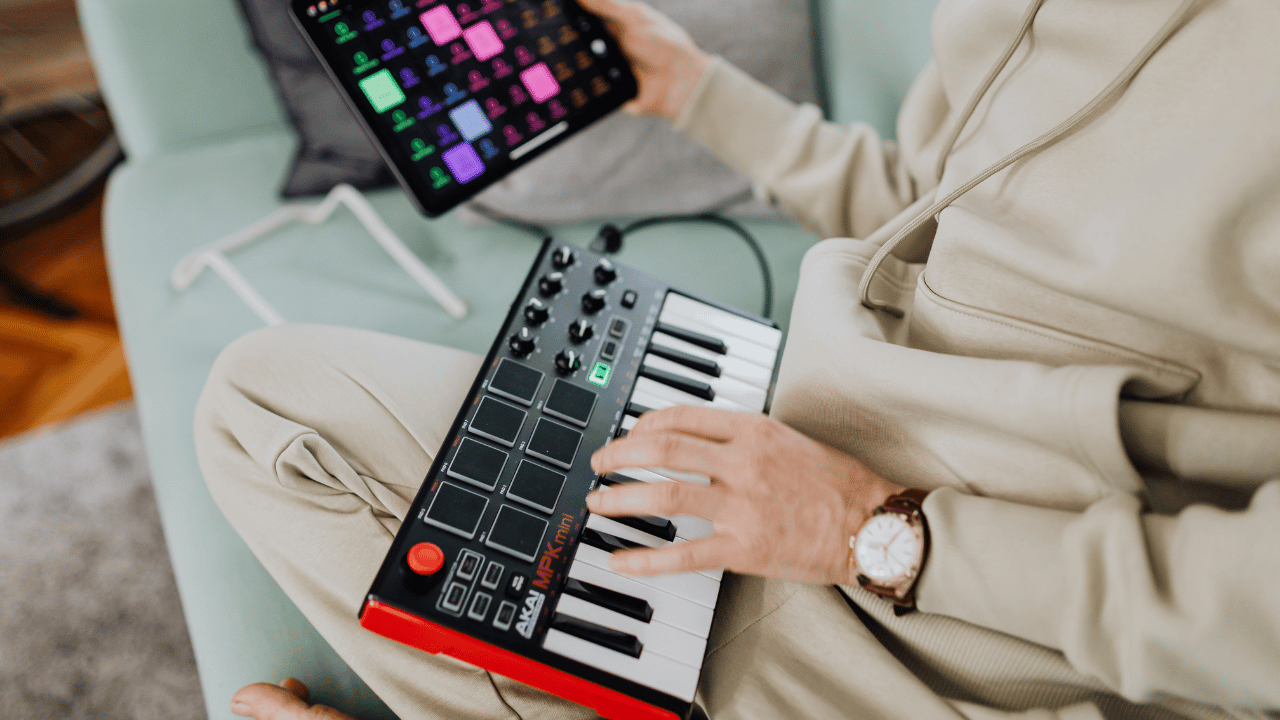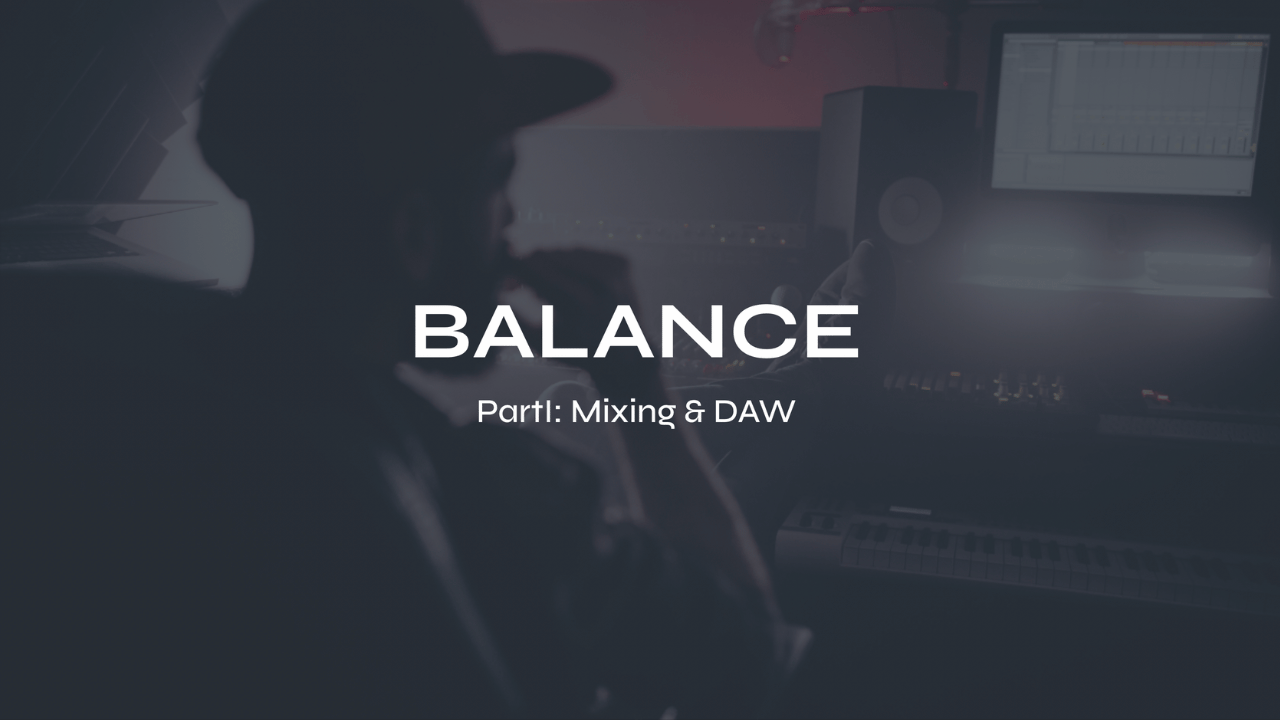The Sound War: Audio vs MIDI - Which Reigns Supreme?

Sound is a powerful medium of communication and expression; it conjures emotion, sets the tone and tells stories. There are two ways to produce music electronically: Audio or MIDI. While audio has been around longer, most modern recording studios use MIDI for its ease of editing, manipulation and transferability. Audiophiles swear by audio's superior authenticity compared to MIDI's artificial sound creation. In this article, we will explore both mediums in detail and declare which one truly reigns supreme - Audio or MIDI?

Check out my Mixing & DAW live online course
The Evolution of Audio and MIDI
The evolution of audio and MIDI has been a game-changer in the music industry. Audio, which is the traditional method of recording sound, involves capturing analog signals and converting them into digital format. This technology has advanced rapidly in recent years with clearer sounds, less distortion and background noise reduction. MIDI was introduced as a revolutionary technique for creating electronic music that emulated natural instruments. MIDI stands for Musical Instrument Digital Interface which generates sound through software or hardware synthesizers instead of live recordings. It also offers an unparalleled level of control over musical aspects such as pitch, timing and tempo adjustments that cannot be achieved through audio.
As technology advances further every year towards greater speed and efficiency it seems like there will always be competition between these two mediums as they both offer unique benefits to different types of musicians - those focused more on achieving authenticity versus those who demand more control over their creations without being tied down by instrument restrictions. However one thing is certain: when it comes to producing top-notch musical performances – whether you're using old-school analogue gear or modern-day DAWs for production - embracing any advantage available can make all difference in creating memorable works-of-art!

Download my FREE Music Production Resource Guides. Magic settings for EQ, Compression & Reverb.
The Pros and Cons of Audio Production
On the plus side, with modern technology, producing high-quality audio has never been easier. It allows for manipulation of sounds in a way that was impossible before digital recording equipment came along, resulting in much greater creative control over the final product. Additionally, when done well, audio can have an incredible emotional impact on listeners - think about how music can make us feel happy or sad. There are certainly some drawbacks to consider as well. Audio production requires specialized equipment and expertise which can be expensive to acquire and maintain. The time investment required is also significant; every minute of finished audio may require hours of recording and editing work behind-the-scenes. One major challenge facing producers today is ensuring their final product will sound good across many different devices - from headphones to car stereo systems - creating a mix that will satisfy all these platforms means being incredibly precise when equalizing tracks so they're balanced appropriately despite diverse playback environments.
Overall though it's clear that both MIDI and Audio each offer advantages depending on what you want your music project needs most: authenticity versus flexibility respectively... ultimately though anyone passionate about music creation probably will incorporate more than one type into their projects!
The Pros and Cons of MIDI Production
MIDI production has its pros and cons. One of the biggest positives is that MIDI allows for precise editing, manipulation and transferability. This means that adjusting notes, changing tempos or applying effects can be done with ease using MIDI software. Additionally, MIDI instruments can emulate a vast array of sounds from different devices such as synth keyboards, drum machines or even full orchestras without needing to physically own those instruments. One drawback of MIDI production is the lack of authenticity in its sound creation. Audiophiles often criticize MIDI's ability to create artificial-sounding music compared to audio recordings which capture real-life sounds versus synthetic ones. Furthermore, it can be challenging to make a robotic sequence sound like a live human performance when using only MIDI-based tracks unless you spend considerable amounts of time programming each note meticulously.
In conclusion, both audio and MIDI have their advantages and disadvantages when it comes to electronic music production. It ultimately depends on what type of music you are creating and how much time (and budget) you have available for recording sessions or programming sequences respectively. Ultimately it's up to personal preference - choose whichever medium feels most appropriate for your project!

Download my FREE Home Studio Setup Guide
Audio vs MIDI: A Sound Comparison
Audio refers to the recording of real-life sound waves, while MIDI involves creating sounds through digital synthesis. While both options have their benefits, audiophiles tend to argue that audio offers superior authenticity and organic character compared to MIDI's artificial sound creation. However, modern technology has made significant advancements in the world of MIDI production. With advanced synthesizers and sampling techniques, it is often difficult for an untrained ear to distinguish between a high-quality audio file and a well-produced MIDI track. Additionally, using MIDI allows for greater flexibility in editing and manipulation during the production process.
Ultimately, whether one prefers audio or MIDI depends on personal preference and desired outcome for the music being created. For some genres like classical music or live recordings where capturing natural sound is crucial, only audio will suffice. However, electronic dance music producers may find that utilizing various software plugins can elevate their productions even higher than relying solely on traditional instruments alone would allow them too otherwise – proving once again that both methods sure have its place in contemporary music today!
The Future of Audio and MIDI
The future of audio and MIDI is an interesting topic to consider as technology progresses at a rapid pace. While both mediums have their strengths and weaknesses, it's difficult to predict which one will ultimately dominate in the coming years. However, there are a few trends that may shed some light on what we can expect. One area where MIDI has been gaining ground in recent years is in live performances. Musicians are finding it easier than ever to incorporate MIDI controllers into their shows, allowing for more complex arrangements and seamless transitions between songs. In addition, software companies are developing new ways to integrate MIDI with traditional instruments like guitars and drums, further blurring the lines between analog and digital sounds.
Audio quality remains a key factor for many producers and listeners. While improvements have been made in digital recording techniques over the past few decades, nothing quite matches the warmth and richness of analog recordings. We may see a resurgence of interest in vintage equipment or hybrid setups that combine the best of both worlds - high-tech editing capabilities paired with classic sound shaping tools.
Ultimately, it's hard to say whether audio or MIDI will emerge victorious in this "sound war." Each has its own unique advantages depending on the context or application they're used for. Nevertheless, by keeping an eye on emerging technologies and staying open-minded about new possibilities (whether they be purely digital or hybrids), musicians can ensure they stay ahead of the curve no matter what shape music production takes next.

Try my FREE Ableton Live course
The Hybrid Approach: Combining Audio and MIDI
One approach that has gained popularity in recent years is the hybrid approach - combining both audio and MIDI to create a more dynamic and authentic sound. This method involves recording live instruments through microphones (audio) while using digital software to control MIDI inputs for other electronic sounds like synthesizers or drum machines. By manipulating the recorded audio tracks along with the MIDI data, producers can achieve a unique blend of organic and synthetic elements in their music.One advantage of this approach is that it allows musicians to retain the warmth and character of analog recordings while still having access to the endless possibilities provided by digital editing tools. In addition, by layering MIDI sounds over acoustic instruments, producers can add textures and nuances that wouldn't be possible with just one medium alone. The end result is often a complex tapestry of sound that transcends traditional genre boundaries.
Overall, while it's true that there are pros and cons to both audio and MIDI as standalone mediums, many industry professionals believe that combining them in a hybrid fashion offers the best of both worlds. Whether you're an audiophile staunchly defending pure analog sound or someone who embraces new technology, experimenting with different production techniques will always yield exciting results worth exploring.
Which Reigns Supreme: Audio or MIDI?
When it comes to choosing between audio and MIDI, there are strong arguments for both. Audio recordings are made by capturing sound waves in the physical world, which results in an authentic recording that perfectly captures the nuances of live performances. On the other hand, MIDI is a digital format that allows you to manipulate sound without any loss in quality or fidelity. This makes it ideal for musicians who want more control over their music production.It's not surprising that many audiophiles prefer audio over MIDI; after all, there's something special about listening to a vinyl record or attending a live concert that simply can't be replicated with digital formats. However, the modern music industry has embraced MIDI as a powerful tool for creating new sounds and experimenting with different styles of music production. Ultimately, whether you choose audio or MIDI depends on your personal preferences and creative goals - but one thing is certain: both mediums will continue to play important roles in shaping the future of music technology.
Futch - Music Production Coach and Ableton Certified Trainer
Here it is, my live online mixing course: BALANCE Part I:Mixing & DAW
BALANCE Part I: Mixing & DAW live online course
What you’ll get:
9 live online Zoom classes (each class is about 2.5 hours long)
scheduled to match the date & time availability of each cohort
9 on-demand video recordings of each module for review. You will always have access to these videos for reference.
9 module PDF reference guides.
9 assignments to practice what you’ve learned after each module
Quizzes and self-assessments after each module to test your understanding of the concepts.
A growing community of members to exchange feedback, ask questions and collaborate with.
Educational discounts on select plugins and hardware from LEVELS partners for successful (80%) quiz results
100% Money-Back Guarantee - just contact support and let me know before class 5 starts. You will then lose access to everything.





